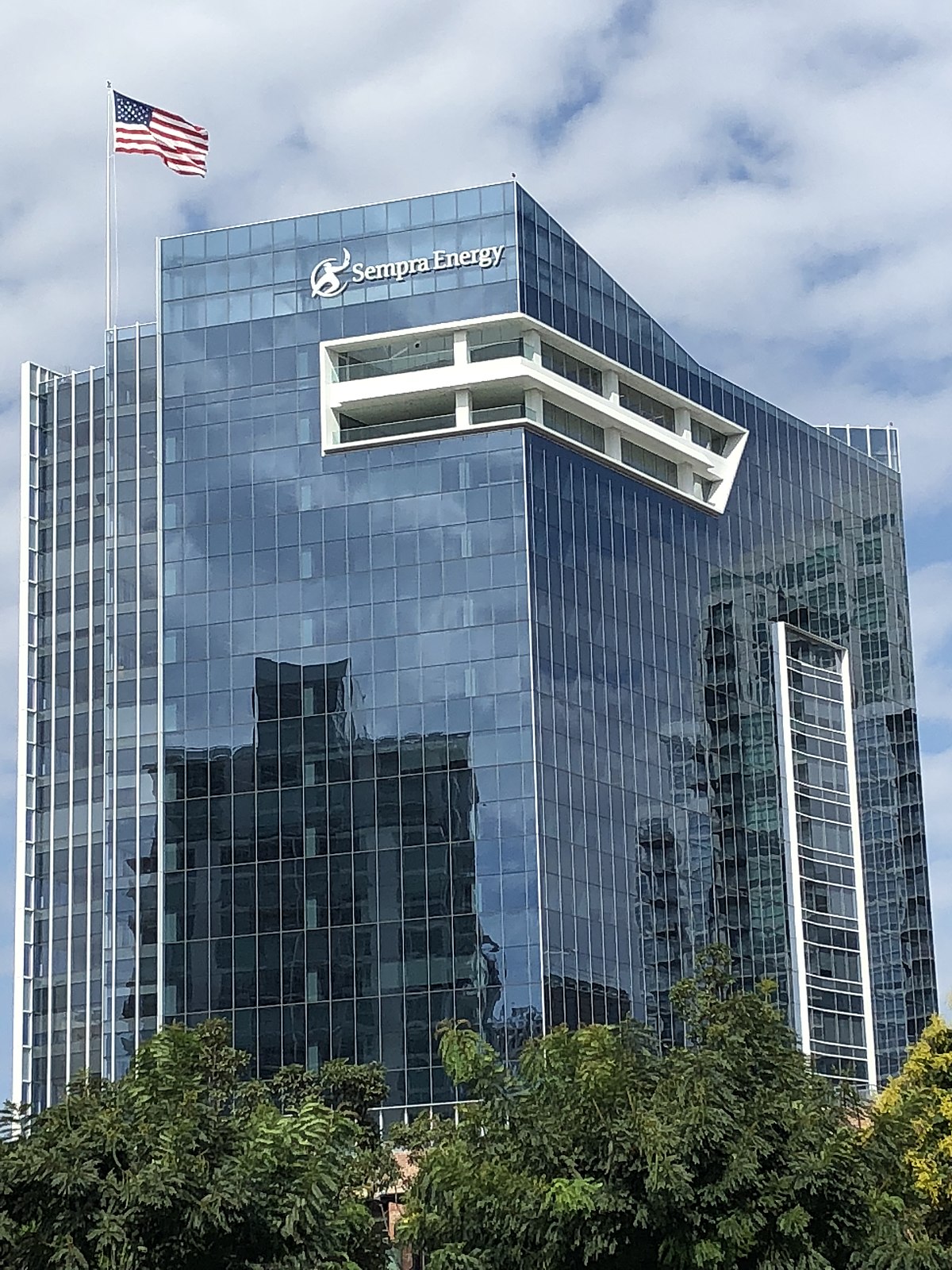
(Sempra 28.Apr.2021) — Sempra Energy (NYSE: SRE) released its 2020 Corporate Sustainability Report, highlighting the company’s actions to create long-term value for shareholders and other stakeholders by managing risks and capturing opportunities related to environmental, social and governance (ESG) factors. The company’s actions are anchored to its four key sustainability pillars:
- Achieving world-class safety;
- Enabling the energy transition;
- Driving resilient operations; and
- Championing people.
View the full details in the report at: sempra.com/sustainability/sustainability-report.
“Over the last two decades, the United States has doubled its gross domestic product, while registering the largest absolute decline in energy-related CO2 emissions of any country in the world,” said Jeffrey W. Martin, chairman and CEO of Sempra Energy. “We think there is an opportunity to continue making real progress and are committed to advancing critical new infrastructure investments that support decarbonizing the economies of North America, while making lower- to zero-carbon energy sources available to our global partners.”
Achieving World-Class Safety
Safety underpins the high-performance culture seen across the Sempra Energy family of companies, where community safety is prioritized and every employee feels responsible for their own safety as well as the safety of others. The Sempra Energy board of directors oversees this mandate across the organization through its Safety, Sustainability and Technology Committee.
The unprecedented challenges presented by COVID-19 reinforced the company’s unwavering commitment to health and safety. Identified among the country’s critical infrastructure, Sempra Energy and its operating companies activated business continuity plans and safety protocols aimed at identifying and mitigating risks while continuing to work to deliver energy safely. Through these actions, Sempra Energy’s safety performance improved in 2020 with all operating companies achieving decreases in their employee recordable injury rate. Examples of safety highlights at each of Sempra Energy’s operating companies can be found on pages 55 and 80 of the report.
Enabling the Energy Transition
Sempra Energy and its family of companies have been advancing programs to decarbonize, diversify and digitalize its energy infrastructure while continuing to work hard to deliver safe, reliable and affordable energy to more than 36 million consumers across North America. The company’s “3Ds” framework supports its enterprise-wide goal to achieve net-zero emissions by 2050 across scopes 1, 2, and 3 for its operations and the customers it serves. Sempra Energy is investing in the energy infrastructure needed in the following three key areas to expand its energy systems and help achieve its climate goals:
- Decarbonization: Reducing the carbon content of energy in critical economic sectors – industrial, transportation and power generation – and emitting no more carbon in its operations than it removes from the atmosphere.
- Diversification: Bringing new lower- to zero-carbon fuel choices to every market it serves, coupled with the expansion of advanced energy networks and storage to improve resiliency.
- Digitalization: Integrating real-time information and cutting-edge analytics to benefit network operators and consumers with improved operational reliability and safety.
“Climate is at the center of our business strategy. That is why we have introduced an action-oriented framework around these three areas in this year’s report – all with a focus on building a stronger and more growth-oriented business, while allocating capital with a view toward emitting less carbon dioxide than we remove from the atmosphere by the middle of this century,” said Lisa Alexander, senior vice president of corporate affairs and chief sustainability officer for Sempra Energy.
The company’s action plan towards net-zero emissions includes interim goals and infrastructure deployment plans through three time periods: 2025, 2030 and 2050. Planned activities are outlined on page 22 of the report.
Driving Resilient Operations
Amidst the pandemic, employees across the Sempra Energy family of companies have continued to deliver essential energy to more than 36 million consumers in North America. With global energy demand projected to increase by 50% by 2050 according to the U.S. Energy Information Administration, resilient energy infrastructure will take on even greater importance. That is why Sempra Energy is continuing to invest in and expand its energy transmission and distribution networks. Examples include, among others:
- Oncor Electric Delivery Company LLC (Oncor) connected more than 60 central-station renewable generators to the energy grid in 2020 with the capability of producing 11,000 megawatts of energy, while also connecting more than 40% of the state’s wind generation capacity to the energy grid through its transmission facilities.
- San Diego Gas & Electric (SDG&E) is leveraging artificial intelligence and satellite technology to improve wildfire mitigation initiatives and help keep its communities safe from wildfire risks with one of the largest utility-owned weather monitoring networks in the nation.
- Southern California Gas Co.’s (SoCalGas) natural gas system provides flexible fuel delivery, long-term storage and reliable energy, especially for critical end-uses. The flexibility of natural gas as an energy resource has been critical in helping California’s electricity providers increase renewable energy penetration.
- Sempra LNG’s design standards for infrastructure resiliency were demonstrated as Cameron LNG experienced the effects of two Category 4 hurricanes in 2020 with no injuries and minimal damage to the newly constructed liquefaction facilities.
- IEnova, as a top renewable energy generator in Mexico, is making critical infrastructure investments with a goal of achieving 97% availability for its renewable generation fleet by 2030 and supporting clean and sustainable economic growth in Mexico.
Championing People to Advance a High-Performance Culture
Sempra Energy is continuing to advance its high-performing culture centered on the company’s vision, mission and values to provide a clear sense of purpose for its more than 19,000 employees with an unwavering focus on safety.
Other key factors in the company’s high-performance culture are a commitment to workforce development and training and a focus on fostering an inclusive environment where diverse perspectives and backgrounds are embraced. In 2020, Sempra Energy created an enterprise-wide action plan centered on five strategic pillars designed to advance the company’s goals for promoting diversity, economic prosperity and social justice. The five pillars include:
- Leading from the top
- Accelerating engagement
- Creating opportunity
- Driving conscious inclusion
- Partnering with our communities
Learn more about Sempra’s action plan on page 57 of the report.
Sempra Energy’s operating companies are also committed to promoting an inclusive supplier base that represents the communities they serve. Moreover, the Sempra Energy family of companies is championing people with a focus on promoting economic opportunity and well-being within these communities. Actions taken include, among others:
- SDG&E and SoCalGas purchased more than $1.7bn in goods and services from businesses owned by women, minorities, service-disabled veterans and members of the LGBTQ community in 2020, marking the eighth consecutive year that each company’s supplier diversity spending exceeded 40% in total, consistently surpassing the California Public Utilities Commission’s goal of 21.5%.
- Oncor’s supplier diversity accounted for nearly $335mn or 12% of its procurement spend, while the company issued $450mn in sustainable bonds with proceeds designated for investments or expenditures with women- and minority-owned suppliers.
- Sempra Energy, its operating companies and the Sempra Energy Foundation contributed nearly $52mn to charities and other nonprofit civic and community groups in 2020. This includes more than $14mn to support community-based organizations engaged in responding to the COVID-19 pandemic.
Guidelines for the Report
This is the company’s 13th annual sustainability report. This year’s report draws guidance from leading global disclosure frameworks, including the Global Reporting Initiative, Sustainability Accounting Standards Board, Task Force on Climate-Related Financial Disclosures and the United Nations Sustainable Development Goals, together with the company’s stakeholder materiality assessment introduced in its 2019 report. In addition, the report pilots 22 of the World Economic Forum’s Stakeholder Capitalism Metrics introduced in Fall 2020.
____________________

